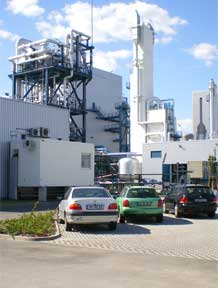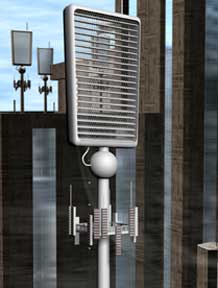CO2 capture

CO2 can be captured from large point sources, such as large fossil fuel or biomass electricity power plants, industries with major CO2 emissions, natural gas processing, synthetic fuel plants and fossil fuel-based hydrogen production plants. Capture from the open atmosphere is also possible.
Where fossil fuels are burnt for electricity, there are three techniques to remove or ‘scrub' CO2 : post-combustion, pre-combustion, and oxyfuel combustion.
- In post-combustion, the CO2 is removed after burning the fossil fuel. This is the method that would be applied to most conventional power plants. Here, carbon dioxide is captured (‘scrubbed') from the exhaust (or ‘flue') gases.
The technology is well understood and is currently used in other industrial applications, although not at the same scale as might be required in a commercial scale CCS power station.
- The technique of pre-combustion is used in the production of fertiliser, chemical gaseous fuel (hydrogen — H2, methane — CH4), and power production.
First the fossil fuel is partially oxidised in air in a ‘gasifier' to form synthetic gas or ‘syngas' and CO2 can be captured from this relatively pure exhaust stream. The H2 can also be separated and used as fuel, and the carbon dioxide is removed before combustion takes place.
- In oxy-fuel combustion the fossil fuel is burned in oxygen instead of air. The resulting flue gas consists of mainly carbon dioxide and water vapour. The water is condensed through cooling and the result is an almost pure carbon dioxide stream that can be transported and stored.
Electricity plant processes based on oxyfuel combustion are sometimes referred to as ‘zero emission', because the CO2 stored is not a fraction or a proportion removed from the flue gas (as in the cases of pre- and post-combustion capture) but the entire flue gas stream itself.
It is possible that some CO2 from burning will dissolve in the condensed water, and so the water may have to be further treated. The initial oxygen burning process is also energy intensive.
Air capture
It is possible to capture CO2 directly from the open atmosphere, but this is still being researched.
Capture costs are estimated to be higher than from point sources, but may be feasible for dealing with emissions from diffuse sources like cars and aircraft.
The theoretically required energy for air capture is only slightly more than for capture from point sources.








